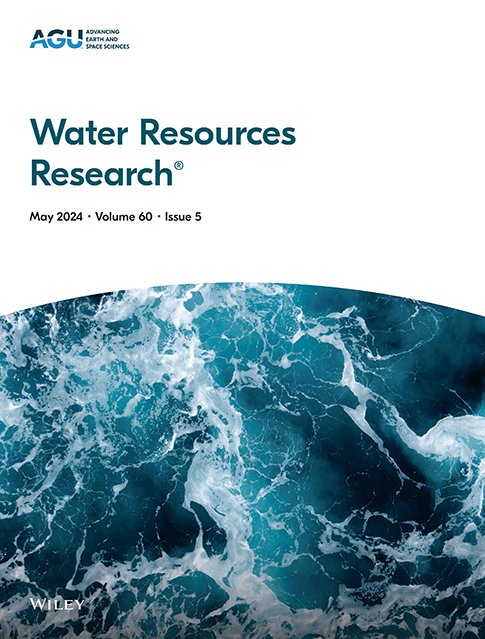Methods for Predicting Bubble Size Distribution in Turbulent Flow
IF 4.6
1区 地球科学
Q2 ENVIRONMENTAL SCIENCES
引用次数: 0
Abstract
Gas bubbles are commonly observed in both natural and human-made water systems, and their generation and distribution play pivotal roles in water quality and aquatic habitats. This study explores methods for predicting bubble size distribution within various types of turbulent flows. Models for bubble size distribution, both with and without bubble breakup, are developed and validated using experimental data from flows featuring return rollers at hydraulic jumps, skimming flows in stepped spillways, and bubbly flows in plunging jets. The experimental measurements reveal that turbulence kinetic energy dissipation rate, air void ratio, and Weber number influence bubble size distribution. These parameters are utilized to formulate the bubble size distribution model. When bubbles remain stable without breakup (i.e., when the Weber number is less than the critical Weber number), bubble size distribution at points and transects within fully developed turbulent flows can be accurately predicted. When the Weber number exceeds the critical value, the process of bubble breakup is considered to estimate the bubble size distribution. Additionally, numerical methods using the population balance model demonstrate that the initial bubble size fraction has minimal influence on the ultimate distribution in fully developed turbulent flows, while the air void ratio significantly impacts bubble size distribution. This study addresses the applicability and limitations of the bubble size distribution models and comprehensively discusses the advantages and disadvantages of each method, providing recommendations for their selection in both research and engineering applications.湍流中气泡尺寸分布的预测方法
气泡在自然和人造水系中都很常见,它们的产生和分布对水质和水生栖息地起着关键作用。本研究探讨了预测不同类型湍流中气泡大小分布的方法。利用水力跳跃时的回滚流、阶梯溢洪道中的掠流和突降射流中的气泡流的实验数据,开发了气泡大小分布模型,并对其进行了验证。实验结果表明,湍流动能耗散率、空隙率和韦伯数影响气泡尺寸分布。利用这些参数建立气泡尺寸分布模型。当气泡保持稳定而不破裂时(即当韦伯数小于临界韦伯数时),可以准确地预测充分发展的湍流中点和横断面上的气泡尺寸分布。当韦伯数超过临界值时,考虑气泡破碎过程来估计气泡大小分布。此外,采用人口平衡模型的数值方法表明,在充分发展的湍流中,初始气泡尺寸分数对最终分布的影响最小,而空隙率对气泡尺寸分布的影响显著。本研究讨论了气泡尺寸分布模型的适用性和局限性,并全面讨论了每种方法的优缺点,为研究和工程应用中的选择提供了建议。
本文章由计算机程序翻译,如有差异,请以英文原文为准。
求助全文
约1分钟内获得全文
求助全文
来源期刊

Water Resources Research
环境科学-湖沼学
CiteScore
8.80
自引率
13.00%
发文量
599
审稿时长
3.5 months
期刊介绍:
Water Resources Research (WRR) is an interdisciplinary journal that focuses on hydrology and water resources. It publishes original research in the natural and social sciences of water. It emphasizes the role of water in the Earth system, including physical, chemical, biological, and ecological processes in water resources research and management, including social, policy, and public health implications. It encompasses observational, experimental, theoretical, analytical, numerical, and data-driven approaches that advance the science of water and its management. Submissions are evaluated for their novelty, accuracy, significance, and broader implications of the findings.
 求助内容:
求助内容: 应助结果提醒方式:
应助结果提醒方式:


